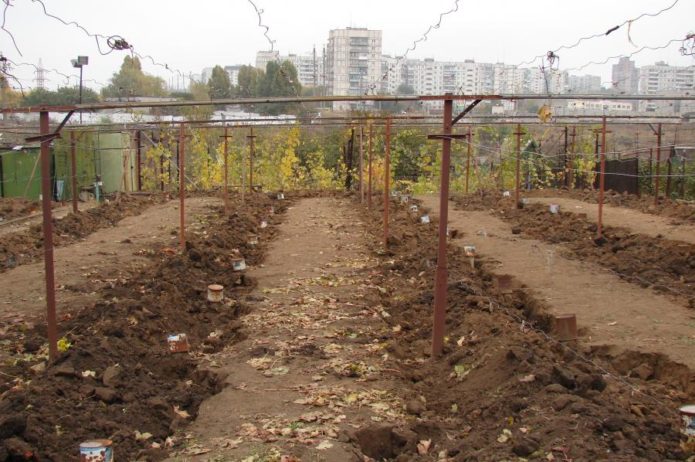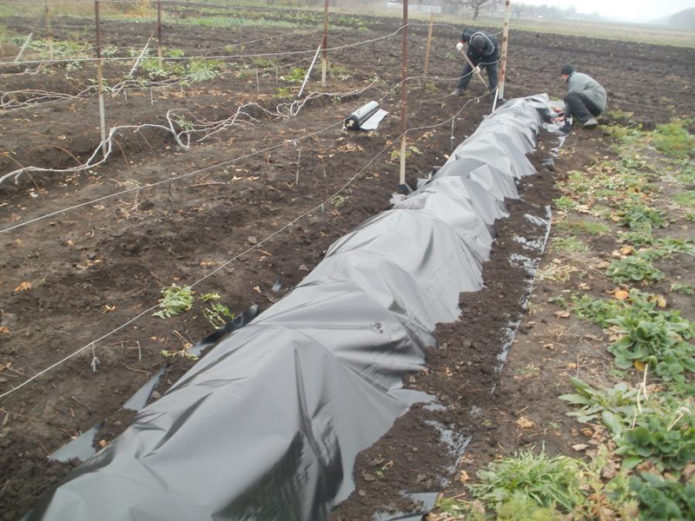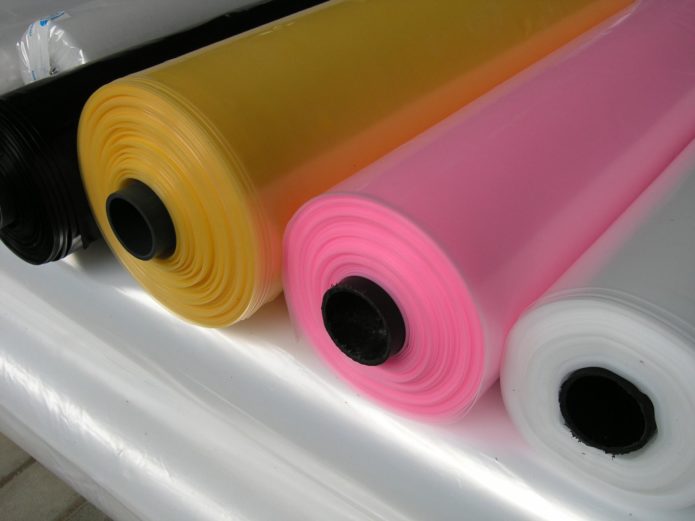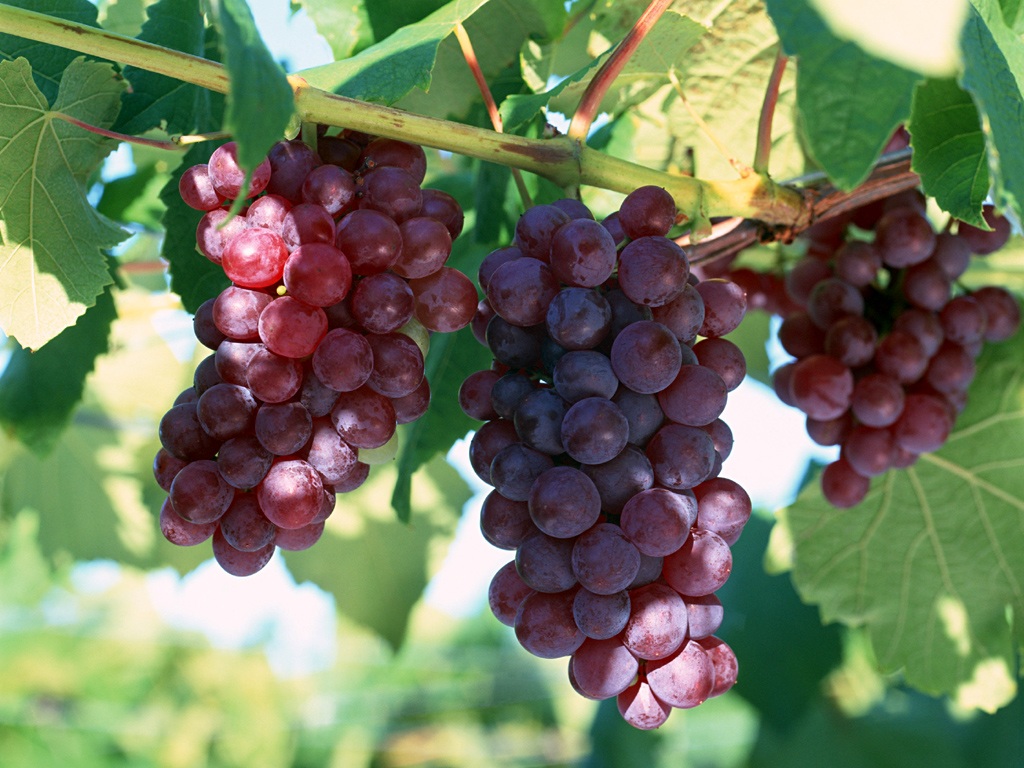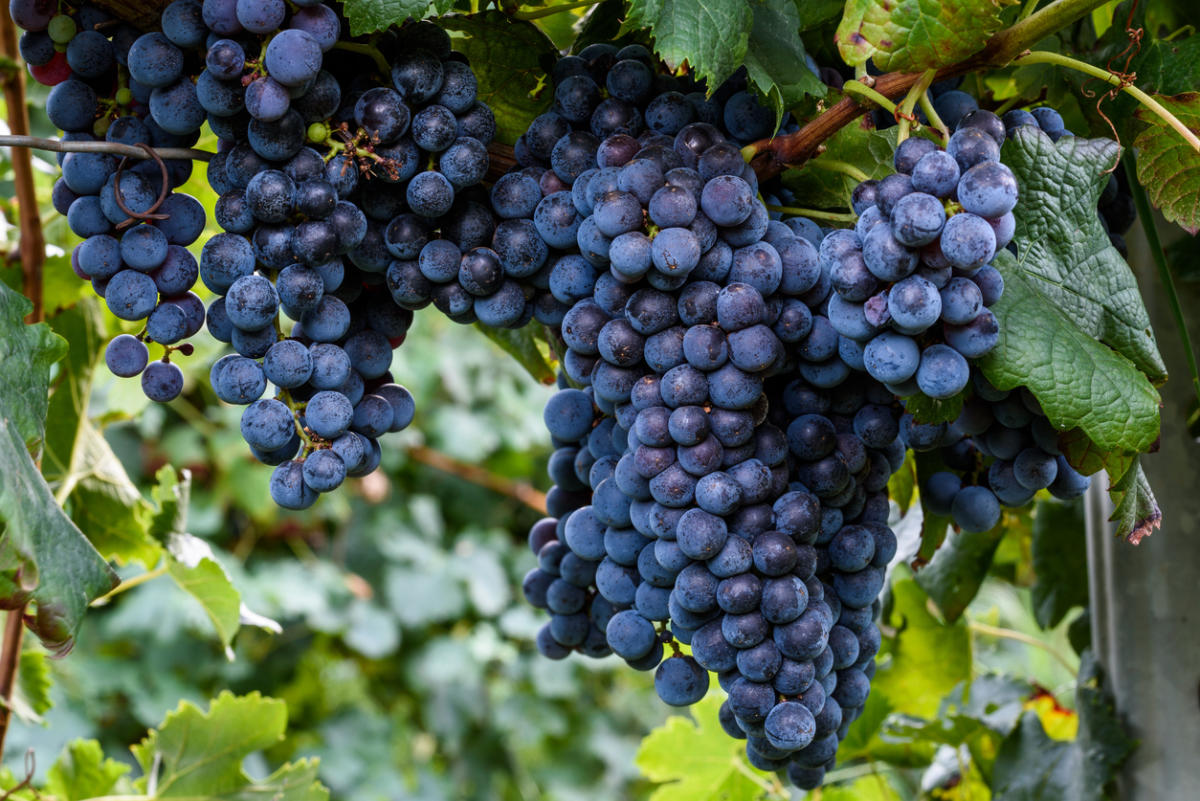Grape is originally a southern plant. But an increasing number of gardeners from cold regions are eager to grow his sweet berries. In connection with the frosty winters, sharp temperature changes in the spring, there is a need for shelter of the wine-city. Even in spite of the appearance of uncovering sorts, most need to be covered for the winter.
Content
The need to shelter grapes
The purpose of the shelter of the vineyard is to preserve the aboveground parts of the plant and the roots from freezing. If the freezing of the vine can lead to the loss of the upcoming harvest, then damage by the frost roots threatens the death of the entire bush. It is necessary to protect the wineries not only from the winter cold, but also from the recurrent spring frosts. During the blooming of young tender buds, it is important not to allow them to be damaged even by a little spring frost. If the roots are not damaged, the bush will grow out, but you will have to forget about the harvest of the current year.
The kidneys of most of the grape varieties are damaged at a temperature of -24οC and below. Old, well-lignified parts of the plant are less susceptible to damage by frost, more so - young annual runs. It is advisable to pay attention to the wintering of the roots. Roots of European sorts can withstand temperatures -6 ... -12οC in places of their location under the ground. At a great risk, the roots of the vineyard are exposed to cold, snowless winters. The shelter of the vineyard allows you to avoid damage to the vine and roots.
How to properly cover grapes for the winter
To properly cover the grapes for the winter, you need to know the features of this process.
Shelter terms
It is necessary to cover the vineyards when the plant is submerged in a state of rest, after the first frosts. A natural indicator of these terms can be served by the complete flying of leaves from a birch.
Terms of removal of shelter
The shelter should be removed in the spring during the period when the average daily temperature for several days reaches +10οC and higher. The natural signal of the onset of this time is the opening of the first leaves of the black currant. It is better to open vineyards on a dry and cloudy day to avoid damaging the delicate buds by scorching sun rays.
But it often happens that the spring warmth is replaced by frosts, and sometimes by the swallowing of cold winds, including leading to snowfall. To protect the vineyard from such natural disasters, we advise in the spring to leave a covering material for some plants to cover the vineyard again. After warming, the shelter is removed. It is unjustified to keep the vineyards in front of them is also not necessary. With an increase in the air temperature, the risk of overheating the plant, damage to the vine by harmful microorganisms increases.
Preparing for shelter
Before the shelter, you should take preparatory measures:
- Remove the wine from the trellis, if it was tied.
- Perform trim runs. There are many ways to prune wine. In this article, we will describe the method for average cropping:
- Remove the mustache, stepsons.
- Leave no more than 8 peepholes for each run.
- Leave no more than 50 eyes on the bush. This allows you to preserve all cold-resistant shoots.
- Treat the wood with copper or iron cuprous in order to protect it from the influence of harmful microorganisms. To do this, prepare a 1-3% solution of copper sulfate or 1% solution of ferrous sulfate. These powdered preparations are available at gardening stores. Apply the solution to the vine with a sponge or rag.
- Water with a hose or buckets if a small amount of precipitation falls out in autumn. To achieve a moist state of the earth to a depth of 50-60 cm. For this, under each mature bush, you will have to pour about 10 liters of water.
How to hide grapes
The following factors can influence the choice of the method of sheltering the vineyard:
- efficiency under the influence of various natural conditions: severe winter frosts, low snow cover, alternation of seasons and thaws with positive temperatures, the threat of icing due to moisture and moisture;
- the amount of financial costs for the purchase of covering material;
- the amount of labor and time spent on the covering procedure.
Consider two ways, common in the middle zone of Russia, including the Moscow region, the Upper and Middle Volga regions.
Shelter of the vineyard with earth
Sequence of operations:
- The vine fits on a thin layer of loose bedding: hay, straw, branches of pine trees.
- Runaways are pinned to the ground with metal braces.
- A moisture-proof material is laid on top of the vine: film, pieces of slate, roofing felt, bags of sugar, flour.
- The moisture-proof material is covered with earth, taken from the row spacing, with a layer of 10-30 cm, depending on the resistance of a particular grade to frost.
The disadvantage of this method is the ability to inflate the kidneys during thaws with melting snow and a relatively high proportion of physical labor.
Dry shelter of the vineyard
Sequence of operations:
- Arrange a lower thin layer (about 10 cm) of straw, hay, grass, branches.
- A vine is laid on it, which is attached with metal clamps to the ground.
- Insulating material is applied on top with a layer of 15–20 cm:
- fallen leaves (the preference is given to oak, which rot more slowly);
- to a straw;
- pine spruce branches.
- Above the vineyard, on arcs, a dome is arranged in the form of a greenhouse made of a colored opaque film or spunbond, glass-glass.
Some gardeners do not put arcs, but directly cover the insulating layer with covering material. It is important in this way of covering to avoid freezing of the vine to the covering material in case of contact with it.
Video: sheltering grapes
Shelter of young grapes
Seedlings of the first year after planting are at risk of freezing more than mature plants. Their roots have not yet had time to grow strongly, and the vine itself is more tender than the runs of old plants. Therefore, young specimens are covered with great care.
Young vineyards are sheltered in various ways, using:
- a straw;
- reed leaves;
- senο;
- οfilks;
- plastic buckets;
- wooden boxes.
The combined way is even more reliable:
- Ο to bore a young bush.
- Make a frame over it from twigs of plants, a thick metal wire.
- Cover with an opaque film or spunbond, then ruberoid.
Grape shelter material
When choosing a shelter material, it is necessary, among other things, to think about the disposal of used covering material in order to minimize, and better, exclude negative impact on the environment.
For the shelter of the vineyard, natural and artificial materials are used as insulation:
- a straw;
- fallen leaves;
- pine branches;
- reed leaves;
- senο;
- carton.
As a covering material used:
- slate;
- boards from boards;
- opaque film;
- spunbond (brands "Agrotex", "Lutrasil", etc.);
- glass cloth, etc.
Consider covering materials, which have recently been widely used.
Films from polymeric materials
The film made of polymeric material will completely protect the winery sheltered for the winter from moisture penetration from above. A film with a thickness of 100 microns and more will do, less thick can break under the influence of snow and ice.
This material has been used when sheltering a wine-city for a long time. However, some gardeners refused to use it, citing the strong greenhouse effect it created during the melting of snow. The damp ground located at the bottom of the shelter, during warming, begins to evaporate a lot of moisture, which does not go away due to the film barrier. The increased humidity promotes the defeat of the vine by harmful microorganisms.
The film made of polymer materials is short-lived, its service life is 1-2 years. Some varieties, for example, reinforced film, are used for 3 years. Colored varieties have a light-converting ability: some enhance the heat from the sun's rays, others dissipate it.
Spunbond
Spunbond is a more durable material, it can serve for 3-5 years. It is obtained from a molten polymer, the boxes of which are exposed to air flow and fit tightly. This material is distinguished by its ability to permeate air and moisture. For the shelter of the vineyard, we recommend using a spanbund with a thickness of 50 g / m2 and more. Among Russian gardeners, the spunbond brands "Agrotex" (GC "Hexa", Russia), "Agril" (France), "Lutrasil" (Germany) have found wide application.
Features of the shelter of grapes in different regions
Depending on the climatic conditions, the shelter of the vineyard in different regions has its own characteristics.
Khabarovsk region
The main danger for the vineyard in this region is severe winter frosts with an air temperature of -40aboutC and below. Therefore, in these places in the shelter of the vineyard there is a thick layer of earth.
Here is one of the ways from Khabarovsk winegrowers:
- The vine is laid on an interlayer of straw, fallen leaves, covered with foil or spunbond.
- Apply a layer of 10-20 cm of earth.
- The organic layer is laid from the bulk, sawdust, peat, leaves.
- The second layer of earth is poured with a thickness of 20-30 cm.
Good results in Khabarovsk, gardeners get when covering the vine and root with thick paper or wooden boxes with the following cover with earth and organic materials. With the additional use of files with a layer of 20 cm, the temperature of the soil in the root zone rises by 4-5 ° C, and in bulk - by 2-3 ° C
North of Russia
For shelter of mature plants, a shelter with a thick layer of earth (40 cm) and the methods of Khabarovsk winegrowers are suitable.
Gardeners pay special attention to young wine-growing, since the vineyard begins with it. Experienced growers recommend planting seedlings in buckets and growing them there for the first season. For the winter they are removed to the cellars, and in the spring of the next year they are planted in the ground.
Central Russia, including the Moscow region
Central Russia is suitable for the two above-described ways of shelter. Another option for this area:
- On the sides of the rows of vineyards, at a short distance from the bushes, 2 lines of boards are laid out, placed on the edge and treated with an antiseptic (for example, used engine oil).
- A vine is laid on a thin layer of litter.
- Insulation is applied to the vine:
- straw;
- sawdust;
- fallen leaves, etc.
- A film or spunbond is laid on top.
Volga region
For the Upper and Middle Volga, the methods described for the middle strip of Russia are suitable.
On the Lower Volga, the danger is posed by the damping of the vine during the winter thaws. Vineyard rows for the winter are covered with a tunnel made up of arches with covering material or film. During thaws with positive air temperatures, ventilation is recommended, for which the covering material is temporarily removed.
Belarus
Belarus is conventionally divided into agro-climatic regions.
The methods of covering the grapes will differ slightly according to the characteristics of the agro-climatic zones.
For the Northern and Central regions, the options for sheltering the vineyards used in central Russia are suitable: shelter with earth and dry.
In the warmer southern agroclimatic region, among others, they also use the following method of sheltering the vineyard:
- The lower part of the bush is covered with earth.
- The upper shelter, 5 cm thick, is made of spruce forest and hay.
- The upper shelter is covered with foil or spunbond.
A properly organized shelter will allow you to successfully overcome an important test in the life of a vineyard - wintering. The gardener will be glad to see live blossoming vines in the spring.

